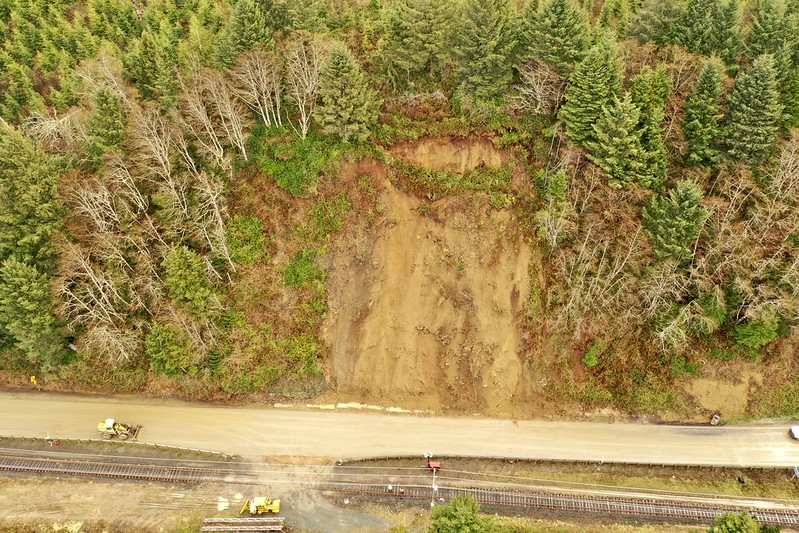Geological Activity Common in Oregon

A landslide is a location where the ground is constantly on the move, part of the natural geology of Oregon, especially along the coast and throughout the Coast Mountain Range. Landslide events are when a new or existing landslide experiences a large pulse of movement. We are continually assessing and taking inventory of unstable slopes. We currently have 4,143 identified unstable slopes along Oregon highways. These landslides affect about 7% of our entire highway system or 495 miles of road.
Our mission is to keep our roads safe and open for travelers. We also recognize the need to make our system more resistant to earthquakes, which can trigger landslides. The effects of climate change make the system even more vulnerable to slope movement.
- ODOT is continually taking inventory of unstable slopes. We currently have 4,143 identified unstable slopes along Oregon highways.
- 64 debris flows
- 2,237 landslides
- 1,842 rockfalls
- The estimated cost to stabilize damage to infrastructure of all inventoried unstable slopes is between $5.3 and $6.3 billion.
- We typically spend around $6.3 million a year on unstable slope mitigation projects and $11.2 million on maintenance repair.
- At the current funding rate, it would take 841 years to fix all the unstable slopes. If we spent $177 million a year, we could do it in 30 years.
Below you'll find more information including definitions, what we are doing and what you can do.